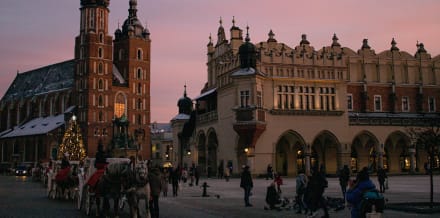More about: 11 Things to Do in Krakow in January
Of course, Krakow's offer is not limited to its establishments. The capital of the Lesser Poland Voivodeship will surprise you with its gems, including the splendid Market Square and the amazing Wieliczka salt mines just a few kilometers from the Old Town.
1. Celebrate the New Year at the Market Square
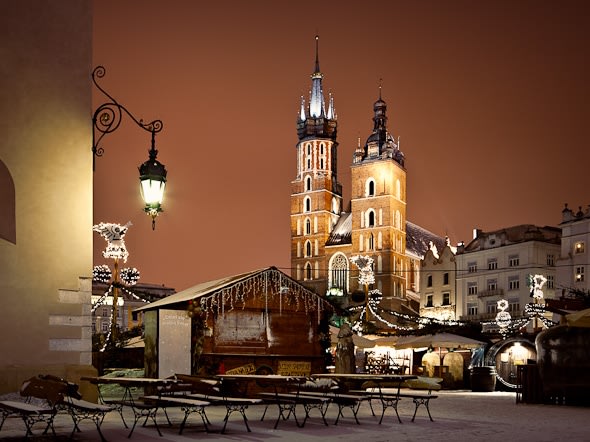
New Year's Eve is one of the most important festive nights in Krakow. On this date, the heart of the celebrations is the Market Square (Rynek Glowny) which you will meet if you book a tour of Krakow's Old Town and which for the occasion hosts a laser screen and a free music festival with both national and international artists. The concert usually starts at 8:30 pm and ends at midnight.
If you don't want to get cold, you can wait for the New Year in a restaurant. Most establishments have a New Year's Eve menu that is concluded at midnight with a glass of champagne. Some outstanding options are:
- The Wierzyneky Restaurant, which offers dishes that were prepared by the Polish royal court.
- The elegant Miod Malina.
If you feel like letting off steam on the slopes, you have nothing to worry about - Krakow's center is packed with nightlife! Some of the most coveted options are the Cuban Theater, the Alchemia and the Propaganda Pub. Please note that most bars and clubs operate on a reservation basis. On New Year's Eve you will need to book in advance. Tickets usually go on sale in early November.
2. Explore the depths of the earth at the Wieliczka Salt Mine
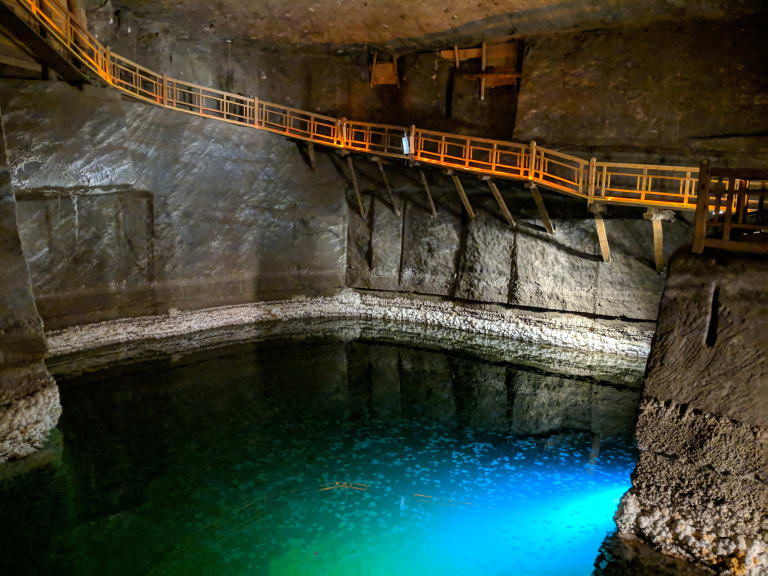
Fourteen kilometers southeast of Krakow are the Wieliczka Salt Mines, a subway labyrinth of tunnels and chambers spread over nine levels that has attracted tourists since the mid-19th century. Nicolaus Copernicus, Fryderyk Chopin and Goethe succumbed to its charms, but they were not the only ones. In fact, in a survey, the inhabitants of Krakow indicated that it was their favorite attraction. In the belly of the earth, the temperature is almost always constant, so visiting in January is a good idea.
Check out how to get to Wieliczka but my recommendation is to book an excursion to the Wieliczka Mines, as an expert guide will accompany you all the way explaining historical anecdotes. In addition, you will see landscapes that cannot be found on the surface: salt lakes and beautiful subway chambers, including the unique St. Kinga's Chapel, the largest church in the world built underground 101 meters deep made exclusively of rock salt.
This place of worship is dedicated to St. Kinga, the patron saint of miners. Tomasz Markowski sculpted the main altar whose panels show the figures of St. Joseph, St. Clement and St. Kinga. The Polish artist also sculpted the side altars depicting Herod's decree, the massacre of the innocents and a statue of the Virgin of Lourdes.
3. Admire Krakow from a different perspective
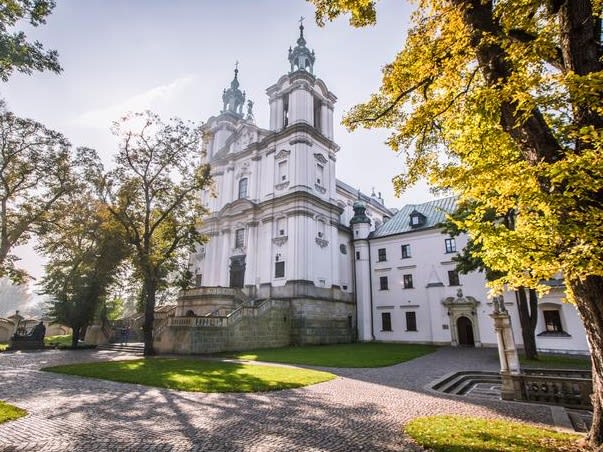
When the temperatures drop, there is a good alternative to see the city's monuments in the cold. Naturally we are talking about booking a cruise on the Vistula River that will give you the opportunity to see the skyline of Krakow from comfortable seats. The cruises depart from the river port of bulwar Czerwieński and after an hour on the waters of the Vistula, they return to the starting point. On the way you will be able to see the following attractions:
- Skalka, a Baroque church in the vicinity of the Kazimierz district.
- Wawel Hill with its castle and cathedral.
- The Monastery of the Norbertine Sisters, the largest religious complex in Krakow. If you are interested in religious architecture, I recommend the post about the 10 churches in Krakow that you have to visit.
- The Cricoteka Museum, an art documentation center founded by Tadeusz Kantor in 1980.
- Dębniki, a peaceful neighborhood on the banks of the Vistula.
- The futuristic Manggha Museum housing an immense collection of Japanese art.
- Kosciuszko Mound, an artificial hill commemorating the national hero Tadeusz Koszciuszko.
4. Test yourself on the slopes of Zakopane
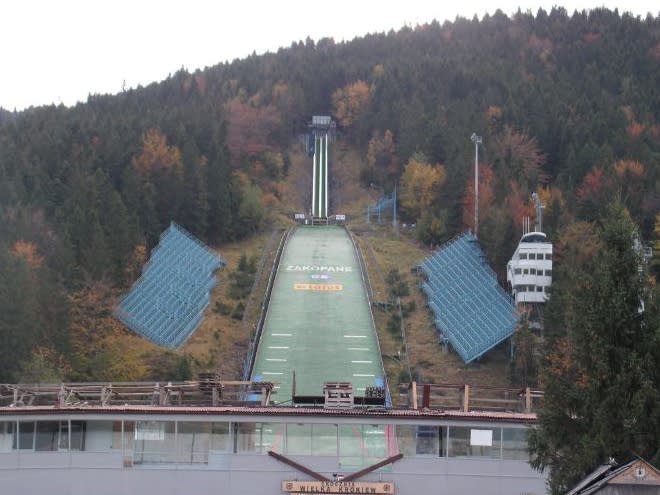
In recent years, Poland has become a popular destination for skiing enthusiasts. Resorts and slopes have improved a lot and the price of a day pass is not even half of what you would pay in Austria or France. Forget the long alpine and Pyrenean slopes, they tend to be shorter here but this weakness can become a strength, especially if you are learning to ski.
If you are staying in Krakow, the nearest destination is Zakopane, a town in the foothills of the Tatra Mountains. The first travelers began arriving in the late 18th century, and the construction of a railroad in 1898 accelerated the conversion of this small mountain town into a renowned tourist destination. Today, it is the winter capital of Poland and boasts three ski areas:
- Kasprowy Wierch (high-altitude alpine skiing 3 kilometers from the center).
- Nosal (it has a slope enabled for Special Slalom and Giant Slalom).
- Gubalowka hill. After a day in the snow, you can go shopping on Krupowki street or try a typical grzaniec, mulled wine with spices and honey.
Book an excursion to Zakopane. It is located about 85 kilometers from Krakow and is the most convenient way to get there and make the most of the day. For more details, I advise you to read the article the best tours and excursions from Krakow.
5. Take a break in the traditional coffee shops
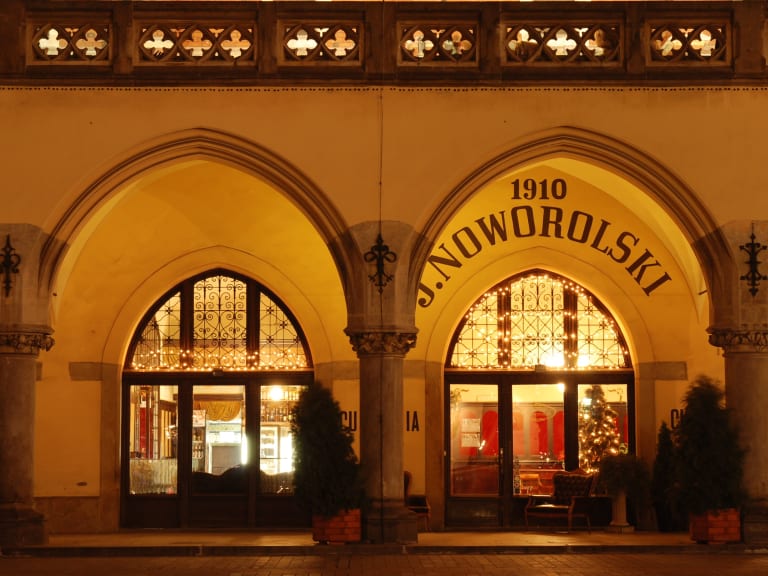
Visiting Northern Europe in winter is a great way to understand local customs and traditions. In Poland, for example, people like to spend their afternoons in cafes sipping hot chocolate or a cup of tea, perhaps along with a slice of cake.
In Krakow, the café culture dates back to the 19th century when the city was part of the Austro-Hungarian Empire and Viennese-style establishments were frequented by the intellectual elite. This custom survived communism and is still alive today. If you are interested in gastronomy, I recommend you to read the post about the best restaurants in Krakow or even book a gastronomic tour of Krakow.
In Krakow there are dozens of bars where you can warm up after a walk through the center. Read on, we have prepared a small list with the best options available:
Noworolski
Opened in 1910, Café Noworolski has witnessed some of Krakow's most important historical landmarks. The young Lenin used to read newspapers in its art nouveau salons and during World War II it was used as headquarters by German troops. If you close your eyes you can imagine a picture of the Polish city during the Belle Époque.
- Address: ul. Rynek Glowny 1 Sukiennice.
- Recommended for a slice of cake overlooking the Main Square and St. Mary's Basilica.
Nowa Prowincja
The favorite place of poets and composers. It's worth a stop at Nowa Prowincja for its thick hot chocolate. You can also opt for a glass of spiced wine.
- Address: Bracka 3, do 5.
- Recommended for dessert lovers. Besides chocolate, Nowa Prowincja is known for its lemon meringue pie, szarlotka (apple pie) and cheesecake.
Jama Michalika
The oldest café in Krakow. The Jama Michalika was founded in 1895, its cafe still offers a traditional menu covering all meals of the day, from breakfast to dinner. Although frequented by many tourists, it is still a must stop.
- Address: ul. Florianska 45.
- Recommended for lovers of Modernism. In this very establishment was born the Młoda Polska, the Art Nouveau movement in Poland. Leading artists of the time placed their creations on the walls.
6. Enjoy a carriage ride
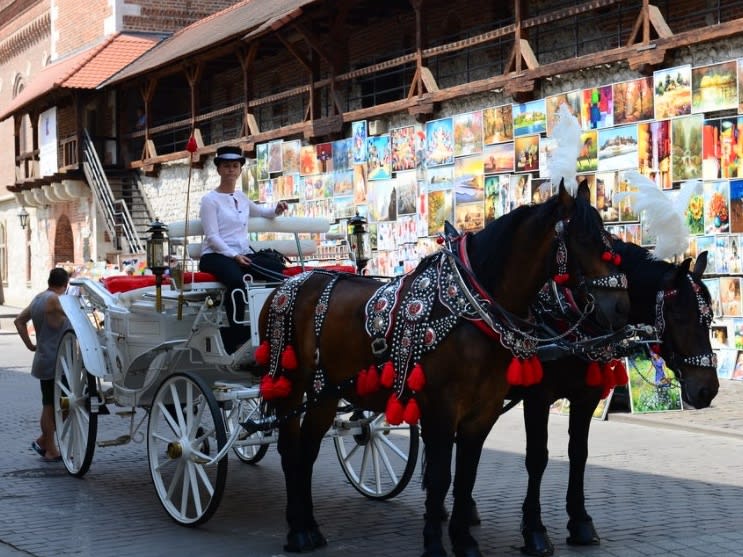
When snow covers trees and meadows, nature takes on a magical touch. In the surroundings of Krakow, the forests turn white every winter and a good way to enjoy these landscapes is with a ride in a horse-drawn carriage. An interesting option is the Ojców National Park, the smallest natural area in the country and yet one of the best.
If you book an excursion to Ojców National Park, you will get to know a territory characterized by steep slopes, rock formations and, above all, 400 caves. Horseback riding tours go through the most beautiful spots of the National Park, such as the ruins of Kazimierz castle. At the end of the ride, most experiences end with a bonfire where kielbasa, Polish sausages flavored with garlic, juniper and marjoram, are roasted.
The tours last one hour and prices depend on the number of people in the group. These tours are very popular with tourists and locals, so the organizers speak English and, in some cases, other languages as well.
7. Escape the cold in a museum
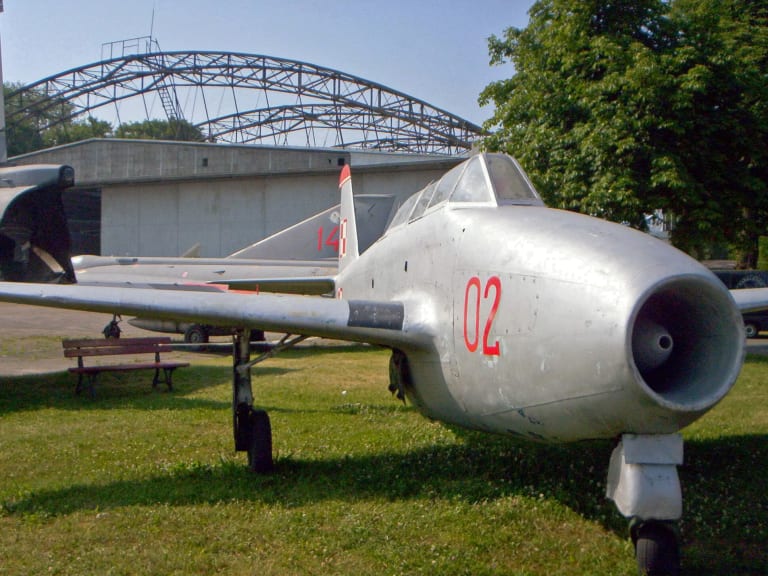
Visiting a museum is always a recommended option.
- If you love airplanes, on the outskirts of Krakow is the Museum of Polish Aviation (Al. Jana Pawła II 39), a must stop for any enthusiast.
- Closer to the center, another recommended option is MOCAK, Krakow's museum of contemporary art. Founded in 2011 in the post-industrial district of Zablocie, it has become the main center of contemporary culture in the city and every year is visited by more than 120,000 people.
- And finally, a very interesting proposal is to take a guided tour of the subway museum Rynek Krakow, where you will discover how people lived in an ancient medieval city with a tour guide. To do this, you will walk through no less than 4,000 square meters underground.
8. Head to Krzysztofory Palace and enjoy the szopki
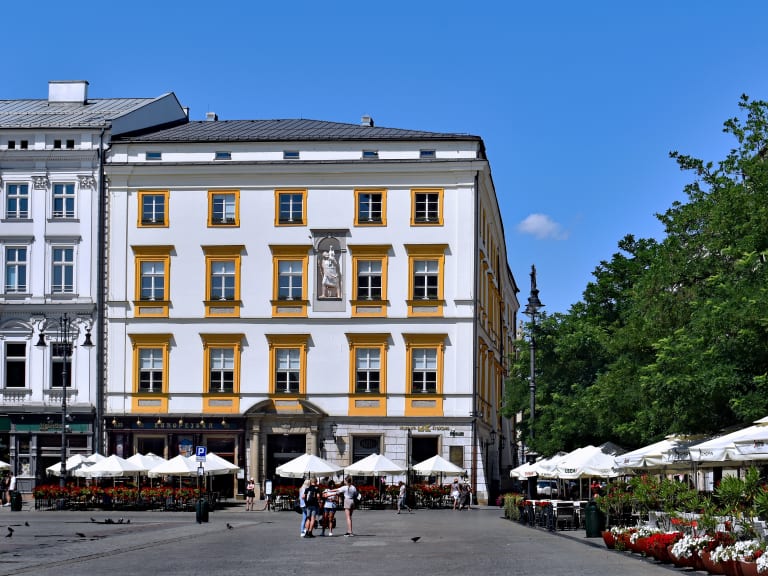
One of the most typical Christmas traditions in Krakow is the creation of szopki, unique Christmas cribs. Instead of representing a typical picture with a grotto, the ox, the donkey and the family of Jesus, these constructions are inspired by local palaces and churches and often contain the figures of important Polish personalities.
The szopki first appeared in the 13th century and initially served as portable decorations for the jaselka, a medieval puppet theater. Over time, these plays began to be used for political satire, so much so that in the 18th century they were banned. Fortunately, after a century they were brought out of oblivion.
Usually, wood or plywood is used to build the szopki, while the smaller parts are usually made of cardboard. Nowadays, Cracovians compete with each other to create the most beautiful szopki. If you feel like seeing their creations, the Krzysztofory Palace hosts the best of them. The exhibition starts in early December and ends at the end of February.
9. Treat yourself to a night at the theater

The Juliusz Słowacki Theater was opened in 1893 and is located in the central Świętego Ducha Square. Designed by Jan Zawiejski, it is one of the most valuable examples of theater architecture in Europe. On the exteriors, you will appreciate its eclectic style that fuses neo-Renaissance and neo-Baroque elements while the interiors are decorated with frescoes by Viennese artist Anton Tuch. Not for nothing has it been declared a UNESCO World Heritage Site in 1978.
Tours of its interior take place only in the summer months, but if you travel to the Polish city in January, you can discover it by buying a ticket to the site. The program is very varied and ranges from traditional to avant-garde shows. If you are interested, you can find all the performances on their official website.
I recommend you to buy your tickets well in advance. Spending a night at the theater is the ideal way to take shelter from the January cold.
10. Mingle with the locals on the ice rinks
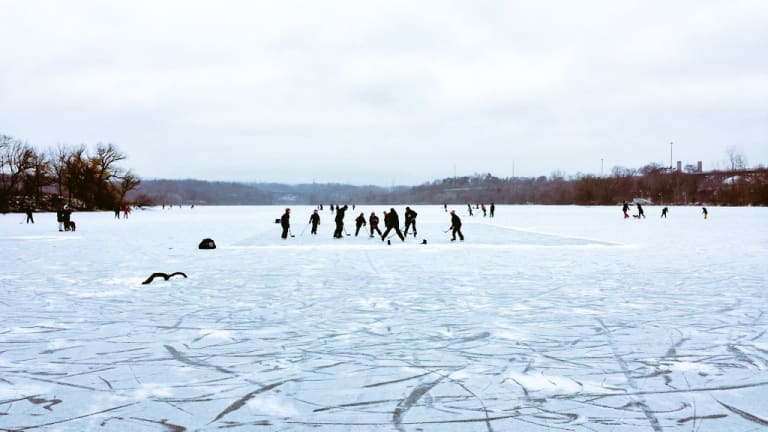
Krakow's ice rinks open in mid-December and close at the end of February.
- The main one is erected each year in Blonia Park, a vast 48-hectare meadow between the Old Town and the park dedicated to Polish philanthropist Henryk Jordan. The best ice rink in Krakow has 1,200 meters, a 360-meter ice path and a space for the little ones to learn how to move on skates.
- Outside the center, you can opt for the ice rink located right in front of the Nowa Huta Cultural Center. It has an area of 23 x 35 meters and is open from December 1 until the end of February.
At both rinks, you can rent skates and helmets on site. You will also find bars and food trucks with food and hot drinks.
11. Warm up like a real lumberjack

Are you familiar with axe throwing? Axe throwing is a sport in which the competitor throws an axe at a target. The discipline was born across the pond and the first to be cemented were the Canadians. Today, the practice has crossed the ocean and Poland is one of the European countries with the longest tradition.
In Krakow, the place where axe throwing is practiced is called Axe Nation and was born from the intuition of three enthusiasts: Kacper Jurasz, Karolina Pach and Tomek Pietraszko. The establishment is located at Grodzka Street 46, about a five-minute walk from the central Market Square.
Axe Nation was born in 2016 and since then hosts a league that follows the original Canadian rules. The establishment is housed in a 13th century basement and has three halls and five courts. Upon entering, a coach will explain the basic rules of the sport and give you some helpful tips on how to properly throw guns.
What to pack for a visit to Krakow in January
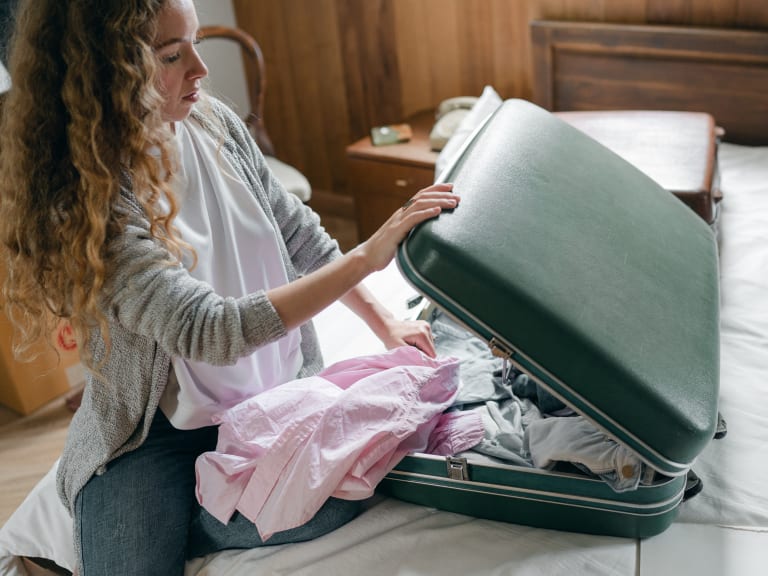
January is usually the coldest month of the year. During the day, the temperature is around 0º while at night it can easily reach -7º/-10º. So, what should you pack? First of all, it is best to dress in layers. Since you will have to walk a bit, take a warm sweater, a heavy jacket and a winter hat.
Keep in mind that it could snow, so it is advisable to wear waterproof clothing. For more info, I recommend reading the post 10 things to do in Krakow in winter.
